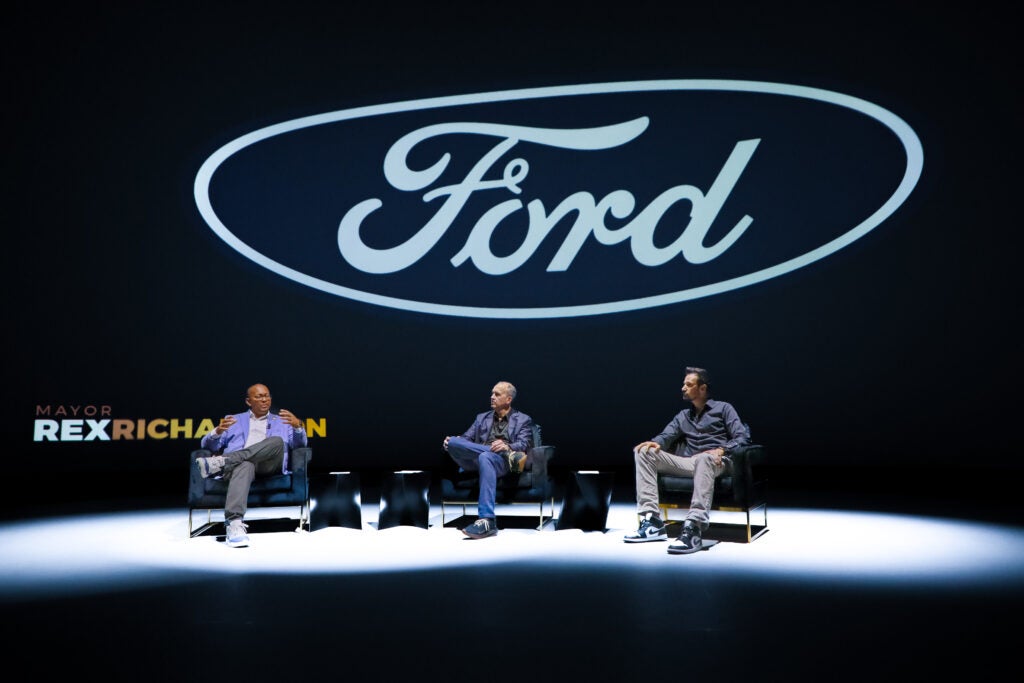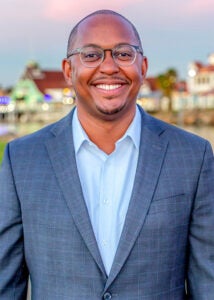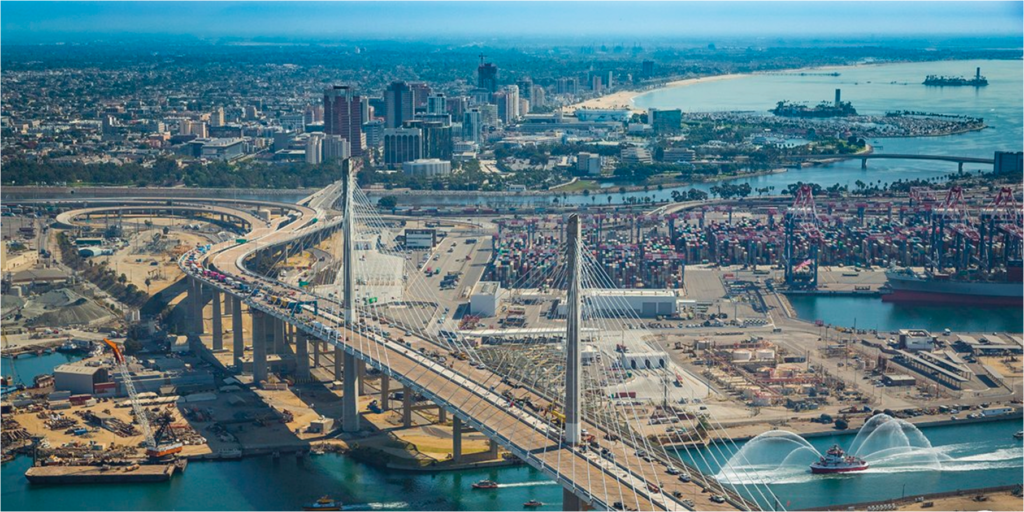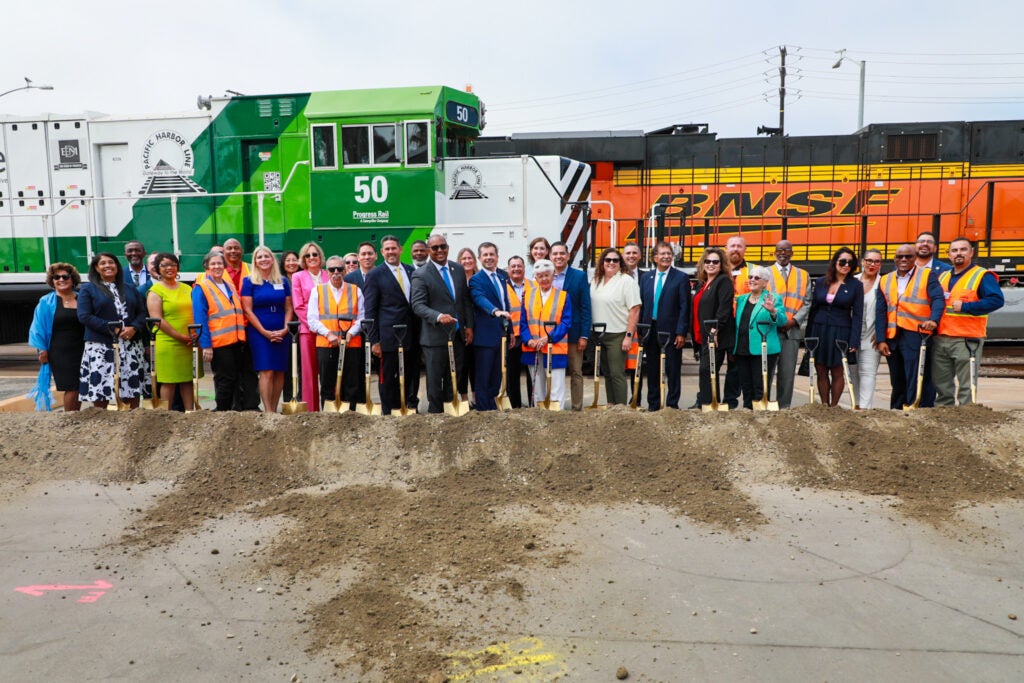Written Q&A with Mayor Rex Richardson on Climate and Economic Progress in Long Beach, California
Long Beach, California, is showing communities around the country why embracing the clean energy economy is a winning strategy.
Home to one of the busiest port complexes in North America, with a long reliance on revenue from oil and gas, Long Beach is now charting a new path that marries climate progress and economic progress. Under Mayor Rex Richardson’s leadership, the city is making bold moves to electrify its port and cut harmful pollution, land coveted EV manufacturing jobs, and leverage billions in federal investment from historic climate laws – all while lifting up frontline and disadvantaged communities hit hardest by pollution and climate impacts.
EDF has worked with Long Beach to host a roundtable of climate stakeholders to support their Climate Action Plan and continues to collaborate with the city through its partnership with the African American Mayor’s Association. To get deeper insights on the city’s transformation, I asked Mayor Rex Richardson about Long Beach’s climate and economic plans, some of the exciting projects that are underway now and what other mayors can learn from his approach.
Let’s start with some big recent news: Ford has officially chosen Long Beach as its new home to develop its next generation of small, affordable EVs. What kinds of jobs and business opportunities will this new manufacturing facility bring to Long Beach? What has the response from the community been?
RR: In the City of Long Beach, we are laying the foundation for the Long Beach of the future — a global, sustainability-centered hub that attracts emerging companies, industries, and technologies in clean and renewable energy. Our recent announcement that Ford Motor Company has chosen Long Beach as the home for its new Advanced Electric Vehicle Development Center is evidence of our unwavering commitment to move full-speed ahead towards a zero-emission future.
Ford plans to open their research-and-development campus in Douglas Park, adjacent to Long Beach Airport, in early 2025. This campus will include two buildings and will host around 450 employees focused on designing Ford’s next generation of low-cost, electric vehicles.

Long Beach Mayor Rex Richardson with Doug Field, Ford’s Chief Officer of EVs and Digital Systems, and Alan Clarke, Ford’s executive director of Advanced EV Development, at the city’s Grow Long Beach 2024 event announcing the automaker’s new EV development center. Photo courtesy of Long Beach, California.
As a part of our Grow Long Beach Initiative, and our city’s ongoing efforts to transition away from oil production revenues as a core funding source for city services, we are placing a focus on growing our economy by drawing thousands of new advanced manufacturing and engineering jobs that will support local Long Beach residents with competitive wages, and will allow graduates from our local schools and universities to buy a home and set roots in our community.
How are you preparing the workforce for new clean energy jobs and economic opportunities, and ensuring equitable access to these jobs?
As the city continues to make progress in growing our clean energy economy and creating thousands of new jobs over the coming years, we must ensure that all our residents feel included in this progress and can take part in these opportunities. After all, creating new opportunities has little value if local Long Beach residents do not directly benefit from them.
A major priority of my administration is connecting our residents to opportunity, and we’re taking some significant steps in this direction. This year, we are working to revamp and modernize our city’s local workforce development board, which will become the Long Beach Workforce Innovation Network (LBWIN). These efforts will help, to develop more streamlined pathways that prepare and connect residents to the jobs of the future in the city’s fastest growing industries, such as aerospace and aviation, goods movement, and the renewable energy sector.
To ensure that communities historically left out of these opportunities are meaningfully included, we are developing an Economic Inclusion Action Plan with various local partners such as the Long Beach Center for Economic Inclusion, our local colleges and universities, and our labor partners to better connect the diverse communities we serve to high-paying and family-supporting union jobs across our primary growth industries, particularly in the green economy.
Long Beach adopted a Climate Action Plan in 2022, committing to reduce greenhouse gas emissions 40% by 2030 and reach net-zero by 2045. How would you describe the relationship between the city’s progress on climate action and its economic progress?
In Long Beach, we believe that the health of our environment and the health of our economy are not mutually exclusive. The growing local and national momentum towards electrifying trade infrastructure and greening U.S. ports as an economic growth strategy is proof of that.
As a leading port city, Long Beach is taking substantial steps to electrify our port infrastructure, not only to advance our climate action goals, but also to drive regional economic growth. By attracting emerging companies, industries, and technologies in clean and renewable energy to set up shop on Port property, we not only stand to garner additional sales and property tax revenue to support the City’s bottom line, but we’ll also see greater tax contributions through our Utility User’s Tax revenue as new businesses plug into our electrical infrastructure to charge up their vehicles, equipment, and operations.
The city’s Climate Action Plan talks about how climate change impacts – extreme heat, more coastal flooding and worsened air quality – pose greater risks to economically disadvantaged residents and communities with a legacy of pollution and health impacts. What are some ways that solutions you’re working on now address those vulnerable communities and ensure that they receive the benefits?
As Long Beach moves away from our reliance on local oil production activities and revenues, and accelerates our transition towards a more climate-sustainable economy, equity remains one of our most important guiding values. This commitment to equity compels us to focus on expanding opportunities for the communities that have carried the greatest burdens in terms of poor air quality, poor health outcomes, and historic lack of investment – communities like West Long Beach.
West Long Beach is a vibrant community of youth and families, schools, business corridors, and neighborhoods that contribute greatly to the fabric of Long Beach. It is home to historic Latino, Black, Asian American, and Pacific Islander communities, including Long Beach’s own Little Manilla, and is also the base of the Port of Long Beach – one of the nation’s largest economic engines.
Despite the unique characteristics of this community, it is also an area of the city that has been on the frontlines of climate disasters, and that has borne the brunt of pollution, experiencing some of the worst air quality in the nation due to its proximity to the 710 freeway. As a result, residents in West Long Beach do not enjoy the same quality of life standards as other parts of the city.
To address these challenges head on, we launched the Westside Promise Initiative – a 10-year community investment strategy that aims to increase economic development, public health, and climate mitigation efforts in West Long Beach, to ensure that families living on the Westside have an opportunity to achieve their highest and fullest potential.
Long Beach has been awarded a number of clean energy and climate investments from the Bipartisan Infrastructure Law and Inflation Reduction Act, including $283 million toward reducing pollution from the Port of Long Beach. Can you talk about the potential impact of that project?
At the Port of Long Beach, we are building America’s “Green Gateway” with a new Pier B On-Dock Rail Support Facility, that will make the port the first in the nation to move 35% of its cargo by rail, speeding up our national supply chain while easing truck congestion, creating jobs, and improving our air quality.
We are accelerating our zero-emission infrastructure at the Port by converting our yard tractors from fossil fuel to electric power, creating financial incentives to help small and large drayage truck operators transition to zero-emission battery electric trucks, and building out the charging infrastructure needed to support these transition efforts.
The Port is also leading discussions around the development of a floating offshore wind staging and integration facility, known as “Pier Wind,” which would serve as the largest facility specifically designed to assemble offshore wind turbines at any U.S. seaport. Pier Wind would significantly help the state meet its ambitious clean energy goals while creating more than 10,000 green jobs for local residents.
Together, these initiatives have helped the Port of Long Beach reclaim its position as one of the greenest ports in the world, and the nation’s second busiest container port.
What advice do you have for other mayors about harnessing public and private investments in clean energy? Why should they be thinking about these investments?
Climate change is one of the biggest threats and challenges to face our generation. Cities, and the mayors who lead them, have a critical role to play in showing climate leadership by taking the necessary steps to reduce global carbon emissions in our respective corners of the world and help curb the effects of climate change while there is still time to act.
And there is no better time than now to begin taking bold climate action. Under the Biden-Harris administration, City and local governments are seeing unprecedented levels of climate, energy, and infrastructure investments through landmark legislation like the Inflation Reduction Act and the Bipartisan Infrastructure Law. These new federal investments are prioritizing the frontline communities that have borne the brunt of climate impacts, to ensure that equity remains a core guiding principle as we advance local climate action efforts.
For mayors and local officials interested in learning more about climate action plans or support with a current plan, our experts are here to assist cities in developing tailored climate action plans that align with community needs, providing access to resources and funding opportunities. Learn more by visiting: www.edf.org/localclimateaction.












